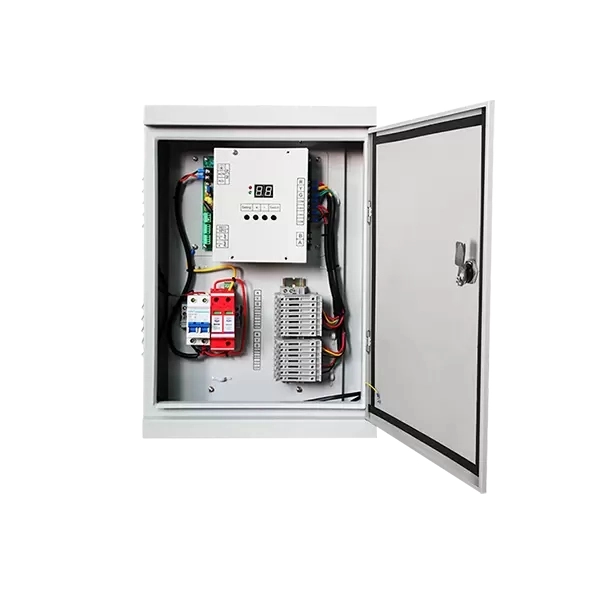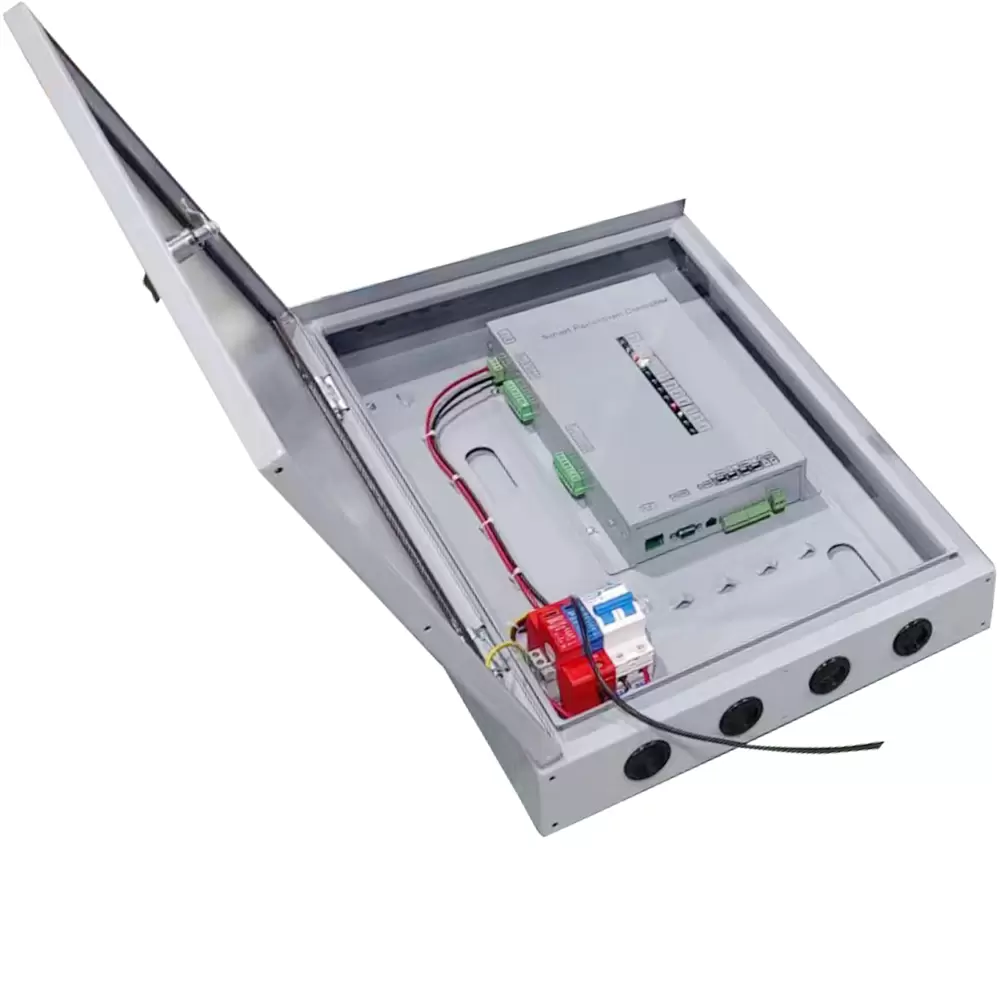Home > News > Industry News > Enhancing Pedestrian Safety with Intelligent Crossing Traffic Controllers
Enhancing Pedestrian Safety with Intelligent Crossing Traffic Controllers
Urban pedestrian safety remains a critical concern in modern cities, where the complexity of traffic patterns and the density of both vehicles and pedestrians increase the risk of accidents. Conventional crosswalk systems, relying on static timing or simple push-button activation, often fail to address real-time traffic fluctuations, resulting in unsafe crossings, inefficient pedestrian flow, and potential congestion.
Yangzhou FAMA Intelligent Equipment Co., Ltd. (FAMA Traffic) has developed intelligent pedestrian crossing traffic controllers that integrate advanced sensing, adaptive algorithms, networked control, and predictive maintenance, providing cities with reliable and efficient solutions for pedestrian safety. This article presents a comprehensive, technical, and multi-layered analysis of intelligent crossing controllers, covering everything from system architecture to operational efficiency, maintenance strategies, and long-term urban safety impacts.
1. Core Architectural Design
1.1 Modular Hardware Structure
Precision-Engineered Components: Each controller is specifically optimized for single-stage crossings and one-way street applications, offering a streamlined and robust hardware architecture.
High Operational Stability: Durable construction ensures stable performance under continuous operation, even in high-traffic areas.
Cost-Effective Deployment: Modular design enables rapid installation, scalability across multiple intersections, and simplified component replacement without major disruption.
1.2 Integrated Control Panel
On-Site Configuration: Technicians can perform parameter adjustments, calibration, and diagnostics directly on the integrated panel without external tools.
Maintenance Efficiency: Streamlined interface reduces the time required for inspections and repairs, enabling faster response to operational anomalies.
Diagnostics and Alerts: Controllers can log system status and alert maintenance teams to early warning signals, ensuring preemptive interventions.
2. Intelligent Sensing and Adaptive Control
2.1 Multi-Sensor Integration
Infrared, Ultrasonic, and Pressure Sensors: Detect pedestrian presence, movement direction, and flow density.
Vehicle Detection Integration: Monitors vehicle speed and distance to adjust crossing phases dynamically.
Environmental Sensors: Measure ambient light, temperature, and weather conditions to optimize visibility and signal timing.
2.2 Real-Time Adaptive Algorithms
Dynamic Crossing Phases: Controller software adjusts pedestrian green time based on detected pedestrian volume and vehicle traffic.
Predictive Timing Adjustments: Historical and real-time data allow the system to anticipate peak flows, reducing wait times and preventing unsafe crossings.
Conflict Resolution: Algorithms ensure safe intervals between pedestrian and vehicular phases to minimize collisions.

3. Networked Operation and Remote Control
3.1 Multi-Mode Functionality
Fixed-Cycle Timing: Standard timing for low-density pedestrian periods.
Pedestrian-Activated Crossing: Dynamic activation in response to real-time pedestrian presence.
Flashing Yellow Phase: Provides advanced warning to vehicles during low-traffic periods.
Remote Command Execution: Traffic management centers can adjust crossing patterns centrally.
3.2 Centralized Coordination
Inter-Intersection Communication: Controllers exchange real-time data to synchronize pedestrian phases across multiple crossings.
Edge Computing Integration: Local processing ensures immediate response to pedestrian detection while maintaining network-wide coordination.
Data Logging: Captures traffic volumes, crossing frequencies, and phase adjustments for analytics and long-term planning.
4. Safety and Efficiency Enhancements
4.1 Pedestrian Protection
Reduced wait times for pedestrians improve compliance with crossing signals.
Adaptive timing minimizes the risk of jaywalking and unsafe mid-block crossings.
Controlled interaction with vehicles enhances safety at intersections and high-risk zones.
4.2 Traffic Flow Optimization
Intelligent synchronization with nearby vehicle signals prevents congestion buildup.
Balanced allocation of green phases for pedestrians and vehicles maintains throughput efficiency.
Reduces idling time, contributing to lower vehicle emissions and better air quality.
4.3 Operational Reliability
Predictive maintenance reduces unexpected controller or lamp failures.
Networked monitoring ensures immediate identification and rectification of system faults.
Modular hardware allows rapid component swaps and minimal operational downtime.
5. Predictive Maintenance and Lifecycle Management
5.1 Continuous Monitoring
Controllers monitor voltage, current, and environmental parameters to detect early signs of hardware stress.
Alerts are generated automatically to maintenance teams, enabling proactive interventions.
5.2 Component Longevity
Modular lamp and controller design extends hardware life and facilitates cost-efficient replacements.
Real-time analytics predict maintenance needs for traffic lights, sensors, and power components, reducing lifecycle costs.
5.3 Maintenance Scheduling
Centralized dashboard enables planners to prioritize intersections based on pedestrian and traffic density metrics.
Remote updates for software and firmware ensure the latest safety algorithms are always applied.

6. Advanced Features for Smart City Integration
5G Connectivity: Enables low-latency communication for rapid adaptive control across networks.
Data-Driven Decision Support: Analytics inform urban planners about pedestrian flow trends, signal performance, and congestion patterns.
Scenario Flexibility: Supports multiple operational modes for diverse environments, including high-density commercial areas, residential neighborhoods, and emergency evacuation routes.
Energy Efficiency: Intelligent lighting and adaptive signaling reduce electricity consumption while maintaining safety standards.
7. Measurable Performance Indicators
Metric | Conventional Pedestrian Signal | Intelligent Controller |
Average Pedestrian Wait Time | 50–60 sec | 18–25 sec |
Intersection Vehicle Delay | 70–80 sec | 45–50 sec |
Pedestrian Accident Risk | Baseline | -35% to -45% |
Maintenance Response Time | 3–4 hrs | <30 min |
Operational Cost | Baseline | -30% |
Observation: Real-time intelligent controllers demonstrate significant improvements in safety, traffic efficiency, and operational cost-effectiveness.
8. Frequently Asked Questions (FAQ)
Q1: How does adaptive timing improve pedestrian safety?
A: By dynamically adjusting green time to pedestrian flow, the system reduces the risk of unsafe crossings and minimizes waiting periods.
Q2: Can intelligent pedestrian controllers integrate with vehicular traffic systems?
A: Yes, networked controllers synchronize pedestrian and vehicle phases to maintain safe and efficient flow.
Q3: How is maintenance simplified with these controllers?
A: Integrated panels and predictive monitoring enable fast on-site adjustments and remote diagnostics, reducing downtime.
Q4: Are these systems suitable for all urban layouts?
A: The modular, multi-mode design supports single-stage crossings, one-way streets, high-density areas, and varied intersection geometries.
Q5: What is the role of data analytics in pedestrian safety?
A: Analytics provide insights into crossing usage patterns, enabling optimization of signal timing and maintenance planning to enhance safety and efficiency.
9. Conclusion
Intelligent crossing traffic controllers are a fundamental innovation in urban pedestrian safety management. By combining:
Precision-engineered hardware for operational stability,
Adaptive algorithms responding to real-time pedestrian and vehicle data,
Networked control and 5G connectivity for centralized and decentralized management,
Predictive maintenance to ensure high reliability,
FAMA Traffic provides solutions that maximize pedestrian safety, optimize traffic flow, reduce operational costs, and support smart city initiatives.
The comprehensive deployment of these systems represents a critical step toward safer, more efficient, and responsive urban mobility, addressing the increasing demands of city pedestrians while maintaining smooth vehicular operation.
